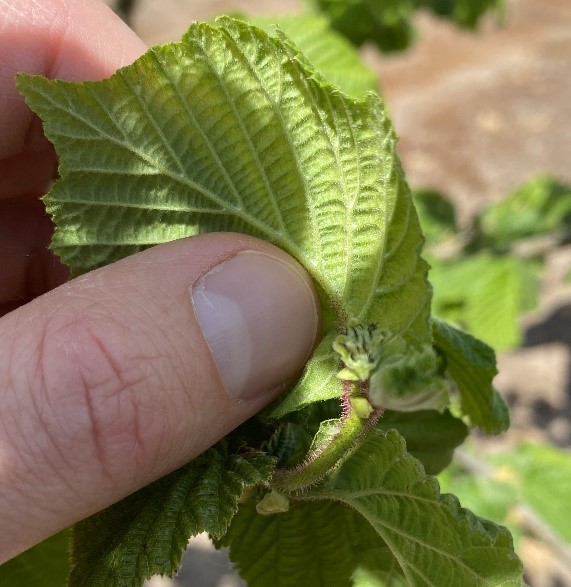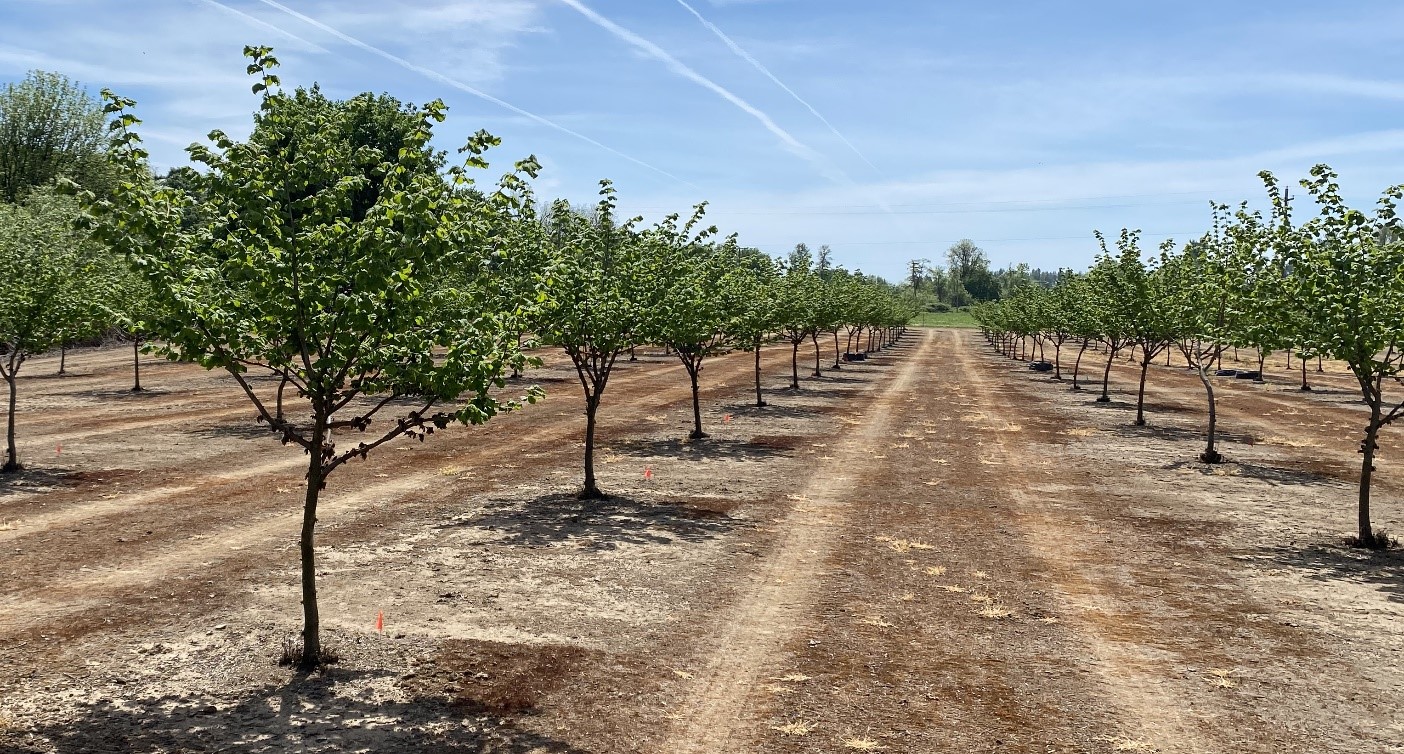In-Season Foliar Boron for Hazelnuts
November 05, 2021
Background
Boron (B) is required in hazelnuts for proper vegetative and reproductive growth as it plays an important role in cell wall and cell membrane integrity. Even when there are no signs of B deficiency yields of fruit and nut crops, including hazelnuts, have been improved by B applications. In addition, B applications can reduce malformed seeds and ‘blanks’ in hazelnuts.
Conditions That Lead to Boron Deficiency
Boron is generally in the soil as boric acid [B(OH)3] which can leach out of soils, resulting in deficiency. Leaching increases in light, sandy soils and soils with low organic matter. Even when B concentrations in the soil are sufficient, drought conditions or cool temperatures reduce water uptake and therefore B uptake through mass flow. Moreover, B is not efficiently translocated from the leaves of hazelnuts to young developing nuts (where B levels are strongly correlated with nut set and yield).
Ways to Optimize Boron Fertility in Hazelnuts
Because B uptake from the soil is affected by water availability, temperature, soil texture, and soil organic matter content, foliar B applications are a more reliable tool to meet B demand at critical times in hazelnuts. Additionally, since B is not efficiently translocated from leaves to young developing nuts, it’s important to apply B as a foliar spray to directly target the developing nuts. The effectiveness of a foliar B application is also tied to the formulation of the B product being applied, in particular its ability to penetrate the leaf cuticle and get into the plant.
Desired Boron Tissue Test Values
Boron tissue test levels for hazelnuts should be in the range of 30-200 ppm. Applications of B still result in yield increases even when B is > 30 ppm, but no application of B should be made if tissue test values are close to or greater than 200 ppm since that is the level where B toxicity starts to show up.
Note that tissue testing should be done in August and used to make decisions for the next cropping year. Leaves should be taken from the middle of in-season shoot growth of average vigor.
When to Apply Boron to Hazelnuts?
Research has shown applications of B can increase hazelnut yield when applied in May through July. This coincides with fertilization of the ovule by the pollen grain and when ovary growth is very rapid. Those processes will both be supported by foliar B.
Recommendations: 1-2 applications in one or more of May, June, or July.
- 1 qt/ac of BRANDT® Smart B with a spreader such as BRANDT® 719 Spreader and compatible pesticides (jar test).
- 1 qt/ac of BRANDT® Manni-Plex® Cal-B with a spreader such as BRANDT 719 Spreader and compatible pesticides (jar test)
- 1 qt/ac of BRANDT® Smart K B with a spreader such as BRANDT 719 Spreader and compatible pesticides (jar test) [especially if K tissue test levels are marginal (< 0.7%), soil test K levels are marginal (< 150 ppm) or the orchard is not irrigated].

Hazelnut cluster just beginning to develop

hazelnut orchard
